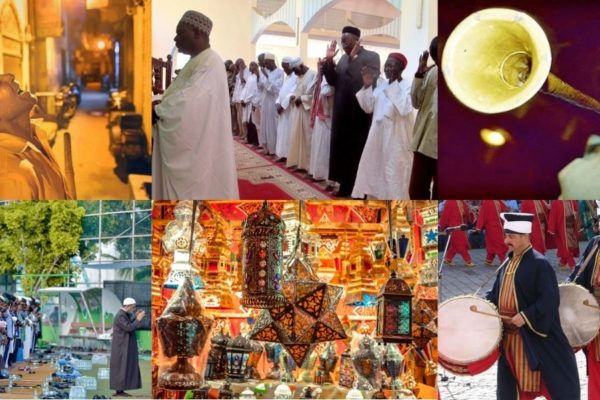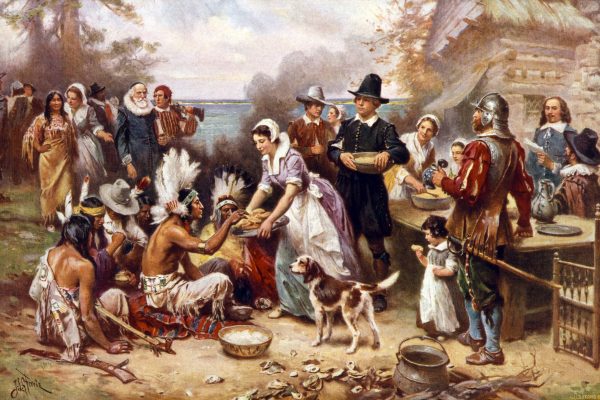How much do you know about the vast and vibrant history of East Asian Muslims and Islam?
How much do you know about the vast and vibrant history of East Asian Muslims and Islam?
Islam first arrived in East Asia during the Tang Dynasty in the 7th century. Traders, scholars, and travelers played a pivotal role in the spread of the religion.
Records from 713 CE speak of the arrival of an Arab (“Da shi”) ambassador to the Tang court. This marked one of the earliest official contacts between the Arab Muslim world and China.
The peaceful nature of Islam resonated with the locals, leading to its acceptance and integration into East Asian cultures.
As Islam took root in East Asia, it blended with local traditions and practices, creating a unique cultural tapestry.
The mosques built in the region often showcase a fusion of Islamic and East Asian architectural styles, reflecting the harmonious coexistence of different influences.
The Influence of Islamic Scholarship in East Asia
Islamic scholars from the Middle East and Central Asia traveled to East Asia, bringing knowledge in various fields such as science, mathematics, and philosophy.
Their teachings not only enriched the intellectual landscape of East Asia but also contributed to advancements in areas like astronomy and medicine.
Early Islamic Influence in East Asia
During the 8th to 14th centuries, Islamic influence in East Asia thrived. Muslim merchants formed important trading connections with China and other neighboring countries, contributing to the growth of commerce and cultural exchange.
The spread of Islam in East Asia was not only limited to trade; it also found its way into the hearts of the local population, leading to the establishment of mosques and Islamic educational institutions. This cultural integration resulted in a unique blend of Islamic and East Asian traditions, shaping the identity of East Asian Muslims.
The influence of Islam extended beyond economic and cultural realms, impacting the political landscape as well.
Muslim advisors and officials played significant roles in the administration of various East Asian dynasties, offering their expertise in governance, diplomacy, and law. Their contributions helped foster a climate of religious tolerance and intellectual exchange within these societies.
The Golden Age of Islam in East Asia
The most vibrant period for East Asian Muslims was during the Golden Age of Islam, which lasted from the 8th to the 14th centuries.
This era witnessed great achievements in various fields, such as science, art, medicine, and astronomy.
Scholars like Al-Khwarizmi, Al-Farabi, and Ibn Sina made discoveries that influenced East Asian societies.
Art and architecture also flourished during this period, with the construction of mosques, madrasas, and palaces showcasing intricate Islamic designs and calligraphy.
These structures served as places of worship and learning and stood as symbols of the rich cultural heritage shared between East Asian Muslims and their counterparts in the Islamic world.
Contributions to Science and Technology
When we think of Muslims’ contributions to science and technology, our minds often turn to the renowned scholars of the Middle East, Central Asia, and South Asia. However, East Asian Muslims have also played a crucial role in advancing knowledge in various fields, leaving a remarkable legacy that deserves recognition.
During the Yuan (1271-1368) and Ming (1368-1644) dynasties, Muslim scholars in China made notable strides in astronomy and mathematics.
East Asian Muslims have made notable contributions to science and technology, blending Islamic knowledge with local innovations. During the Yuan and Ming dynasties, Muslim astronomers and mathematicians like Ma Yize and his descendants made crucial advancements in China. They introduced new astronomical instruments and translated important Islamic texts into Chinese, greatly influencing astronomy and calendrical science.
In Southeast Asia, the Sultanate of Aceh in the 16th and 17th centuries became a center of scientific learning, particularly in medicine and navigation. Acehnese scholars were known for their medical knowledge, which they shared with other parts of the Muslim world. They also excelled in navigation, using sophisticated techniques and instruments to explore and map the seas, facilitating extensive trade and exploration.
Modern contributions include the work of Muslim researchers in Japan who have excelled in fields such as engineering, physics, and biomedical sciences. Their innovations and discoveries continue to enrich the global scientific community, demonstrating the ongoing impact of East Asian Muslims in advancing science and technology. These examples highlight the enduring contributions of East Asian Muslims to the scientific and technological heritage of the world.
Contributions to Philosophy
In China, Liu Zhi (ca. 1660–ca. 1730) was a prominent figure who wrote extensively on Islamic philosophy while integrating Confucian and Daoist concepts. His works, such as “Tianfang Xingli” (Philosophy of Arabia), explored the harmony between Islamic teachings and Chinese cultural values, fostering a unique intellectual synthesis.
In Southeast Asia, the Malay world saw scholars like Hamzah Fansuri in the 16th century, who introduced Sufi philosophy through his poetry and writings, deeply influencing the spiritual and intellectual landscape of the region. These contributions underscore the rich philosophical heritage of East Asian Muslims.
Contributions to Art and Architecture
In China, the Great Mosque of Xi’an, built in the Tang Dynasty and expanded during the Ming and Qing Dynasties, exemplifies this fusion with its traditional Chinese architectural elements combined with Islamic motifs.
In Southeast Asia, the Sultanate of Malacca was a center for Islamic art and architecture during the 15th and 16th centuries, with its mosques and palaces showcasing intricate wood carvings and calligraphy.
The Kampung Kling Mosque in Malacca, with its distinctive multi-tiered roof and blend of Sumatran, Chinese, Hindu, and Malay architectural styles, is a testament to this cultural synthesis. These examples highlight the rich artistic and architectural legacy of East Asian Muslims.
Contributions to Trade and Commerce
East Asian Muslims established and enhanced vital economic networks.
In China, Muslim traders during the Tang and Song Dynasties played a crucial role in the Silk Road, facilitating the exchange of goods, culture, and ideas between East Asia, Central Asia, and the Middle East. The port city of Guangzhou became a thriving center of Muslim commerce.
As mentioned, in Southeast Asia, the Sultanate of Malacca in the 15th and 16th centuries emerged as a pivotal maritime trading hub due to its strategic location. Muslim merchants in Malacca connected trade routes between the East Indies, the Indian Ocean, and beyond, dealing in spices, textiles, and other valuable commodities.
The Acehnese and Bugis traders further exemplified this legacy by dominating regional and international trade networks. These contributions underscore the impact of East Asian Muslims on global trade and commerce.
Contributions to Medicine
Hui Muslims developed Hui medicine in China, integrating traditional Chinese medicine with Islamic principles.
This system includes herbal treatments, acupuncture, and dietary guidelines aligned with Islamic teachings. Prominent figures like Ma Jixiang, a Hui Muslim physician during the Ming Dynasty (1368–1644), played a crucial role in developing Hui medicine, helping to bridge Islamic and Chinese medical traditions.
During the 16th and 17th centuries, the Sultanate of Aceh in northern Sumatra, Indonesia, emerged as a center for medical learning. Acehnese scholars translated and adapted Islamic medical texts, enriching regional medical knowledge. They were renowned for their expertise in herbal medicine, utilizing local plants and herbs to treat various ailments. This knowledge was disseminated throughout the Muslim world, contributing to the broader Islamic medical tradition.
Wrapping up
East Asian Muslims’ contributions to the various Islamic sciences are not spoken about enough. Their achievements are remarkable and are worthy of mention.
If you learnt something new from this article, share it with a friend!





